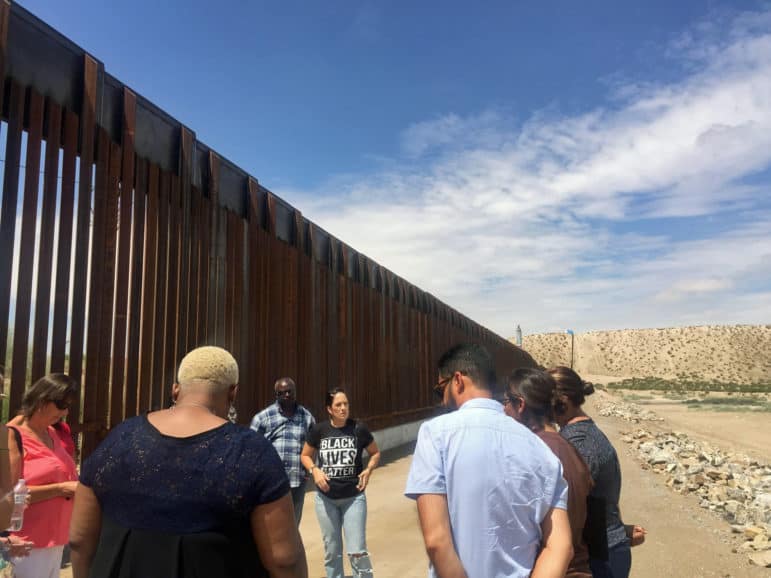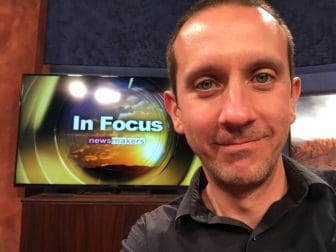
Heather Wilson
A view of the newly completed upgrade to the border fence in the Anapra neighborhood in Sunland Park, N.M. Faith leaders and community organizers from around the United States visited the fence this week.
COMMENTARY: Monsoon season has been brutal this year for migrants trying to make the trek across the U.S.-Mexico border near El Paso, Texas. Five people have recently died trying to illegally cross the Rio Grande, which is unusually full and fast because of heavy rains.
Thus far in 2017, 10 people have died trying to cross the river near El Paso. There were six deaths in 2016.
The region we locally call the borderlands – El Paso, Ciudad Juárez and southern New Mexico – is a crossroads for so much. Heading north, for example, are computers manufactured at a Foxconn facility a mile south of Santa Teresa, N.M. Illegal drugs are heading this way too. Tourists and illegal guns are heading south.

Heath Haussamen
Also heading north are lots of people seeking a better life. Among the recent dead were three Guatemalan nationals, including two teens.
In the Anapra neighborhood in Sunland Park, N.M., a newly completed upgrade to a section of the border barrier approved during the Obama administration seeks to stop illegal crossings. It’s a stark reminder that the United States has been building a wall for some time, with bipartisan support.
In spite of our efforts, people continue trying to cross. Border militarization makes the trek riskier, but it isn’t stopping people. It’s a Band Aid that won’t stay on.
The borderlands have been raped and pillaged for centuries, starting with Spanish conquerors in the 16th Century. We used to be Mexico. Part of this land joined the United States in 1848 with a treaty that ended the Mexican-American war. Some folks moved south to remain in Mexico. The border hopped them again in 1854 with the Gadsden Purchase that established the current boundary.
The border has also literally been fluid at times. Old families tell stories about homes that were in the United States one year and Mexico the next depending on the flow of the Rio Grande. That didn’t stop people from visiting each other.
Today, though, we’ve accepted militarization that in some ways cages us. The U.S. portion of the borderlands is surrounded by the fence to the south and U.S. Border Patrol checkpoints in other directions. Some residents without legal status are blocked from medical care because they can’t pass through a checkpoint. Kids sometimes have to skip field trips and sporting events. It’s been tricky at times to transport medical marijuana to and from Las Cruces because of the checkpoints.
And there’s Anapra, a historic community that today is literally cut in half by the fence. There’s no border crossing in Sunland Park, so people would have to travel miles east or west, to El Paso or Santa Teresa, and then miles back to visit folks who live only a few blocks away.
We, the people of the borderlands, live in one region that has been chopped into three states in two nations. People continue to die here, victims of the risks they take for their hopes and dreams.
I don’t see how militarization and hard lines have ever made people here safer. And our growing bi-national industrial economy along the border only increases the need for fluidity.
We must evolve with an increasingly global economy. There’s so much potential for the borderlands to lead the Western Hemisphere into that new world, and create a safer and more robust society for our people, if we will learn from our history and embrace our multinational future together.
Heath Haussamen is NMPolitics.net’s editor and publisher. Agree with his opinion? Disagree? We welcome your views. Learn about submitting your own commentary here.